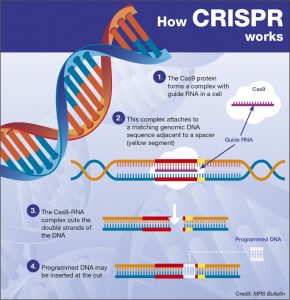Science Café 360
GW-CHIPR and the Clinical and Translational Science Institute at Children’s National (CTSI-CN) have partnered to bring you an overview of the latest café in the Science Café 360 series. The objective of the Science Café 360 is to promote bi-directional conversations between researchers and local communities by creating an atmosphere where participants can build trust, co-mingle, and engage in open dialogue.
The topics for the science café’ series focus on four priority areas determined by the DC Healthy Communities Collaborative (DCHCC) 2016 Community Health Needs Assessment.
Using Data to Build Strong Partnerships Between Schools and Health Systems
This café’s featured speakers included:
- Dr. Olga Acosta Price, Director of the Center for Health and Health Care in Schools, Associate Professor at the Milken Institute School of Public Health at the George Washington University and an expert in the development, evaluation and sustainability of school health programs.
- Dr. Michael Long, Assistant Professor in the Department of Prevention and Community Health in the Milken School of Public Health at the George Washington University and an expert in obesity prevention.
- Marisa Parella, School Based Mental Health Program Manager at Mary’s Center and an expert in community, school and health system partnerships to enhance mental health care for children and families.
- Dr. Chioma Oruh, a member of the Chancellor’s Parent Cabinet for DC Public Schools and the DCPS Early Childhood Education Policy Council.
- The event was moderated by Tonya Vidal Kinlow, Vice President for Community Engagement, Advocacy and Government Affairs and leader of the Child Health Advocacy Institute at Children's National. Ms. Kinlow is an advocate for health-education partnerships and has served on the DC Board of Education and as the first Ombudsman for DC Public Schools.
Dr. Price opened the panel with a frank discussion on the need for equity and strengthening community partnerships within schools. Particularly in DC, where in some wards 29% of families are living in poverty[i]. Along with poverty, experiences of chronic stress and trauma are also prevalent in these communities. Nearly half of young people in these communities have experienced a traumatic event. Among DC high school students’ the rate of attempted suicide is double the national average[ii]. Schools are often the first source of mental health care, but they lack the training and resources to deal with the severity and pervasiveness of the problem.
Dr. Oruh’s experiences with school officials has been tumultuous to say the least. She has family members with mental illness, two sons diagnosed with autism, and has seen how ill-equipped some schools are in addressing the need for extra care. She states how many parents feel isolated from schools and school decisions, and how they often feel as though they are “treated like the enemy”. Trauma is not a singular experience of individuals, but felt by entire communities, particularly minorities and those with disabilities who have disproportionately higher rates of chronic stress and poverty.
Dr. Parella gave a personal account of a family she encountered in her work with Mary’s Center. One child that was having behavioral problems in school had actually fled with his family from Honduras. In Honduras he had witnessed the murders of close family members, had survived periods of starvation and extreme violence, and upon arriving in the US had seen his father deported. His mother did not speak English, was unemployed, and without health insurance. Mary’s Center helped to get the family access to healthcare, English lessons, and offered other resources for the mother including job skills. Immediate access to healthcare and employment resources helped address some of the causes of stress in this household. This leads to more sustainable change and improves the boy’s prospects for the future. In fact, Mary’s Center programs that connect families with healthcare and employment resources have been shown to improve student performance and improve the quality of the relationships with their families[iii].
Healthy child development cannot be left to the schools alone, and is dependent on providing members of this community with the resources they need to learn how to better cope with the stress and conditions of poverty, often circumstances that they cannot control or prevent. Schools are nested within these communities and are a perfect location to target for a lasting and permanent impact on community health. Although, existing public policies in schools vary dramatically by region and have the potential to either help or hinder schools’ efforts to implement successful programs. This presents an opportunity for research teams and health policy experts to test and evaluate new programs and hopefully make policy changes at the city, state, or even national scale.
To help accomplish this, Dr. Long suggests the use of a Strategic Science Framework[iv].
Essentially, this framework is used by researchers to ensure evidence-based policies are implemented. Those in educational settings are not researchers, and neither are policy makers, but the goal of the framework is to bring research findings to policy makers and bridge that knowledge gap. Researchers, policy makers, and school officials should also try to work with parents and community members that deal with these kind of challenges every day.
Listen to our podcast with each of the speakers or check out our previous Science Cafe CHIPR Podcast here!
[i] http://www.dchealthmatters.org/content/sites/washingtondc/2016_DC_CHNA_062416_FINAL.pdf
[ii] https://www.urban.org/sites/default/files/publication/81731/2000833-health-needs-in-the-washington-metropolitan-area-potential-intiaitives-for-investment-by-carefirst.pdf
[iii] http://www.maryscenter.org/sites/default/files/HSHF_Year_14_Report%20Final.pdf
[iv] http://www.sciencedirect.com/science/article/pii/S0140673614623977?via%3Dihub#fig1
Caitlin Carter, MPH is a research associate and program manager for Urgent Matters. She also assists with program management for the Criminal Justice Health Initiative and provides qualitative research expertise on other research projects at CHIPR.













